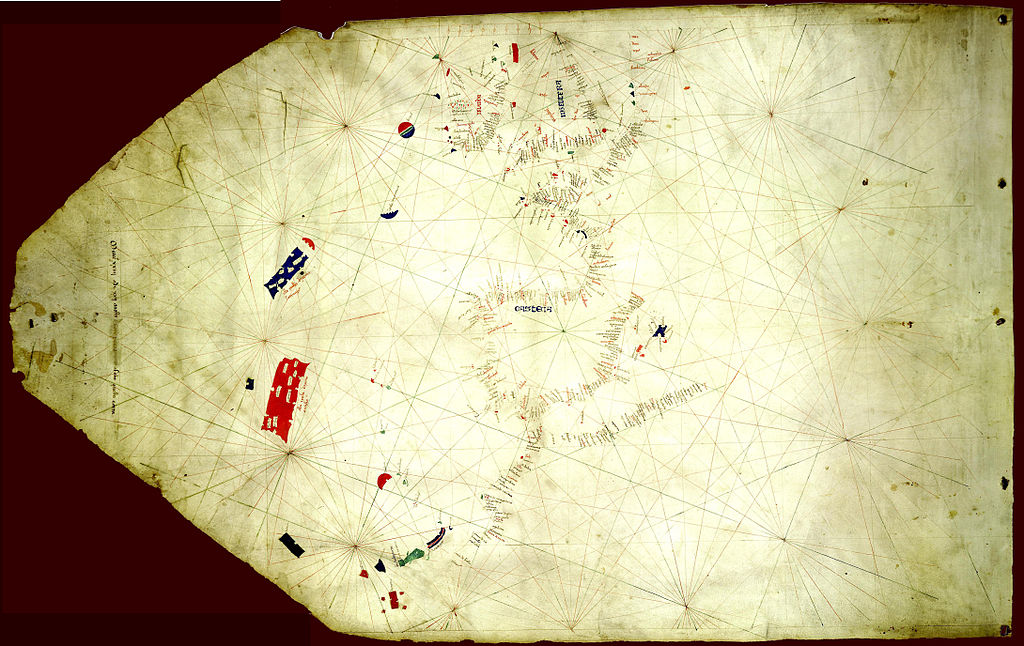Authors:
Historic Era:
Historic Theme:
Subject:
April 1955 | Volume 6, Issue 3


Authors:
Historic Era:
Historic Theme:
Subject:
April 1955 | Volume 6, Issue 3

Editor's Note: The last issue of AMERICAN HERITAGE reported the publication in Europe of an ancient map giving evidence that the Western Hemisphere was discovered by Portuguese explorers before Columbus. This map, whose history and meaning are discussed in the following article, is here reproduced in color for the first time in the United States.
Every American schoolboy knows that Christopher Columbus discovered America in 1492. But did he? Save for the Norsemen who in 1,000 A.D. came and left, leaving neither imprint nor impress to alter world history, did anyone reach America before Columbus, and, if so, when, and what is the proof?
Almost twenty years ago, Professor Samuel Eliot Morison pointed out to his fellow North Americans that Portuguese and Brazilian historians had been asserting for half a century that what American schoolboys believe is not so. Leading schools and universities in those countries taught, and still teach, that Columbus was a come-lately who capitalized on the unpublicized achievement of an earlier discoverer, and educated Portuguese and Brazilians accept it as fact.
Not without a little national pride, the pre-Columbians believe that the true discoverer of the New World was a Portuguese navigator. Who he was or when he made the first dramatic landfall they cannot say. From time to time, they thought they had their man (Pedro de Velasco in 1452, João Vaz Corte-Real in 1472), but each time they abandoned the claim under sharp questioning by Columbus’ defenders. Through the years, however, by persistent reasoning, deductions and diligent research, their basic theory has managed to make subtle progress toward acceptance—enough so that, today, most historians, including some of the stoutest champions of Columbus, have come to admit that Portuguese navigators before 1492 did suspect or even know of lands lying west of the Azores, and that Portuguese navigators were sailing out through the misty reaches of the great Ocean Sea looking for those lands, and might—just might—have found something. There agreement ends, and the burden has been left with the Portuguese to unfold more about their mysterious navigators and what they did.
Recently, there came to light in England an aged nautical chart of 1424, showing what an outstanding Portuguese cartographical expert, Armando Cortesão, asserts is a representation of the New World made almost seventy years before Columbus’ first voyage, and possibly proving therefore that someone, perhaps unknown Portuguese navigators, had reached America by that time.
The history of this document is almost as intriguing as what appears on it. It came from the collection of Sir Thomas Phillipps who, during the first three-quarters of the Nineteenth Century, amassed the biggest library of old vellum manuscripts the world has ever known. When Sir Thomas died